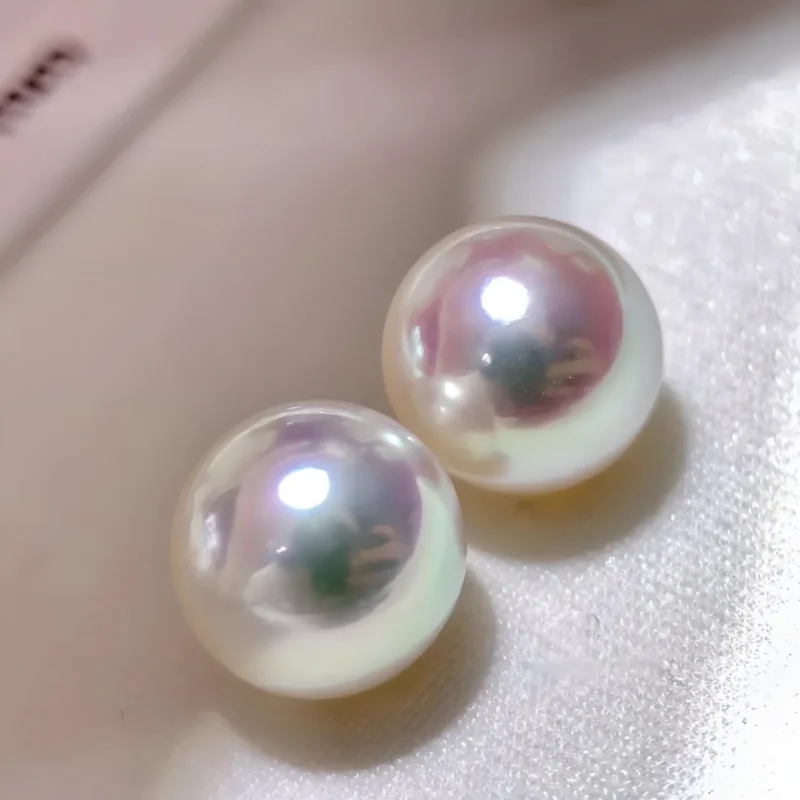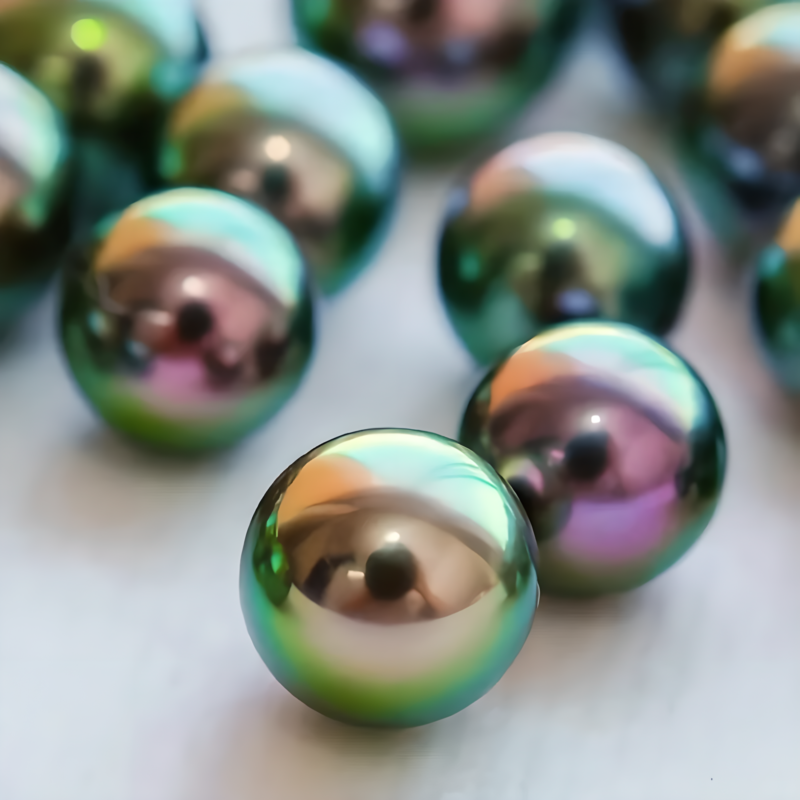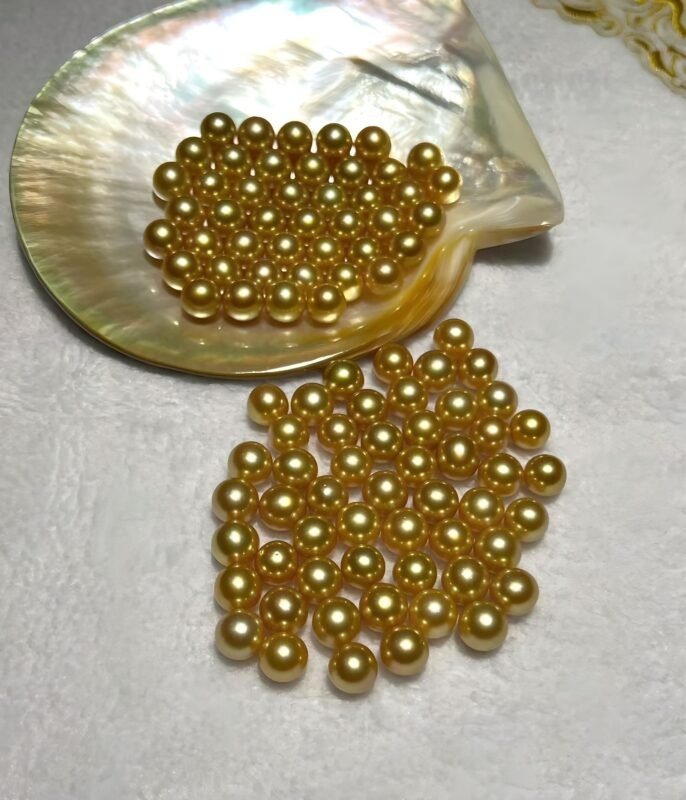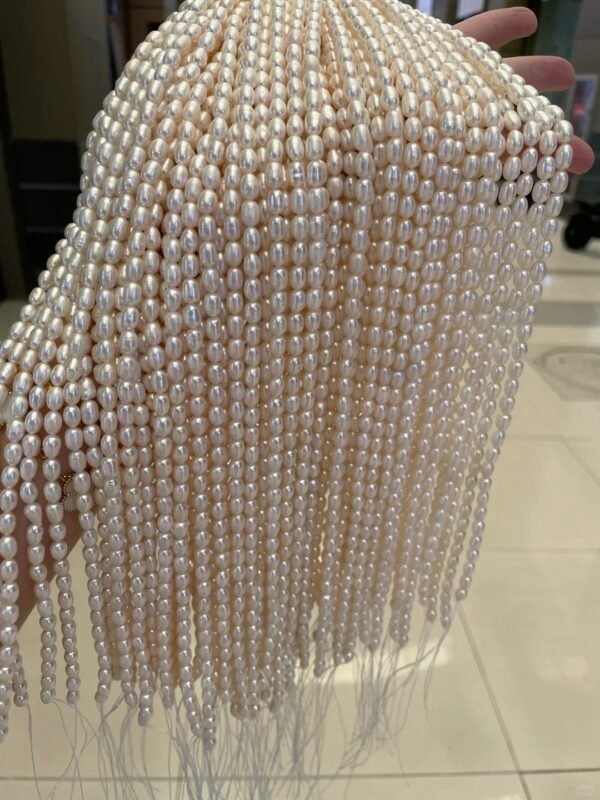Discovering the Diverse Realm of Pearls: An Essential Guide

Enchanting Visuals
ROYAL PURPLE: This duo of naturally tinted Purple Freshwater Edison pearls are truly awe-inspiring!
Your Essential Guide to Pearl Varieties
Akoya Pearls

Akoya pearls, with their perfectly round shapes and gleaming white surface, are sure to captivate. These traditional gems are harvested from the Japanese and Chinese seas, noted for their high luster and brilliant shine, representing some of the finest cultured pearls available.
For a classic look, a single-strand necklace composed of Akoya cultured pearls is the likely choice. Cultivation of Akoya pearls began in the early 1900s, making them a cost-effective option for many.
Quick Facts About Akoya Pearls
- Size: Typically ranges from 2.0-3.0mm to 9.0-9.5mm. Rarely, they measure 9.5-10.0mm.
- Color: Known for their classic white hue, but also come in natural Silvery-Blue and Golden tones.
- Treatments: Black Akoya pearls are often dyed to a distinctive Midnight Blue-Black.
- Shape: The most esteemed shape is a flawless round, though Baroque shapes are also available.
- Pricing: Varies from $75 to several thousand dollars, depending on size, quality, and jewelry type.
- Note: The premier Akoya pearls, known as “Hanadama,” translate to “Flower Pearls” in Japanese.
Tahitian Pearls

The striking, dark Tahitian pearls from French Polynesia are both rare and vivid. Once dubbed the “Pearl of Queens,” these pearls are sought after for their size, sheen, and near-perfect roundness. They originate from the Black-Lipped oyster in the warm South Sea waters.
Quick Facts About Tahitian Pearls
- Size: Typically ranges from 8.0-9.0mm to 15.0-16.0mm. Sizes over 15.0mm are exceedingly rare and costly.
- Color: The “Black Lip” oyster yields naturally dark pearls, from pale Dove Grey to dark Charcoal, with lustrous Overtones like Peacock and Green.
- Treatments: Almost every Tahitian pearl retains its natural color, undergoing only gentle cleaning and polishing post-harvest.
- Shape: Perfect round shapes are most prized. Most annual harvests yield Free-form, Circled, and Smooth Baroque shapes.
- Pricing: Prices start at $80 and can reach into the thousands, depending on various factors like size and quality.
- Note: Tahitian pearls must maintain at least a 0.8mm nacre thickness before exportation.
White & Golden South Sea Pearls

South Sea pearls, with their impressive size and gorgeous satin finish, standout in luminous White and Golden variants. These pearls are among the rarest and most desired, cultured in the seas surrounding Northern Australia and parts of Southeast Asia.
Quick Facts About South Sea Pearls
- Size: Generally the largest cultured pearl type, from 8.0-9.0mm to 20.0mm, with 9.0-10.0mm to 14.0-15.0mm being most common.
- Color: Produced by either Silver-lipped or Gold-lipped oysters, resulting in natural White or Gold colors.
- Treatments: 99% undergo no treatment aside from mild washing and buffing.
- Shape: Perfectly rounded pearls are the highest valued. Baroque shapes comprise the majority each harvest.
- Pricing: Ranges from $200 to tens of thousands, based on characteristics like size and style.
- Note: These pearls boast the thickest nacre layers, imparting a soft glow due to their substantial nacre coverage.
Freshwater Pearls

Once seen as inexpensive Akoya alternatives, Freshwater pearls have evolved to rival Akoya in both quality and value. Originating from Chinese mussels, they offer diverse options in terms of size, shape, and color.
Quick Facts About Freshwater Pearls
- Size: Ranges from 2.0-3.0mm up to 11.0-12.0mm, with experimental breeds reaching 14.0-15.0mm.
- Color: Available in a range of natural pastels like pink, peach, and lavender.
- Treatments: Dyed variants are known as Peacock. Additional colors include red, gold, green, and more.
- Shape: Ideally round, but consistently offering a variety of Baroque shapes.
- Pricing: From $30 to the top of the market, varying based on jeweler type, size, and quality.
- Note: Cultured mostly via “tissue-nucleation,” resulting in substantial nacre durability within the pearls.
By using these reframed insights into pearls, you equip yourself for a prudent purchase in this luxurious realm of gems!
